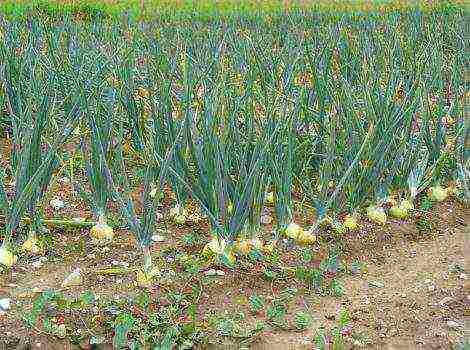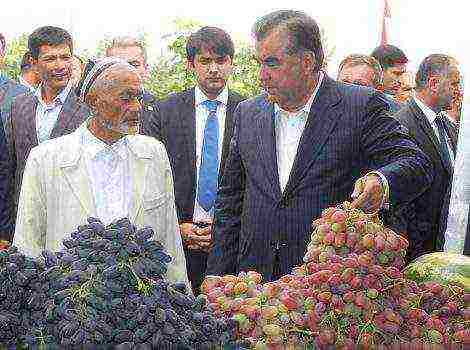Content [show]
.
Growing eggplants in the open field has its own characteristics and disadvantages. Eggplant is a southern culture that loves sun and warmth. Like tomatoes and peppers, "blue" do not tolerate even small frosts.
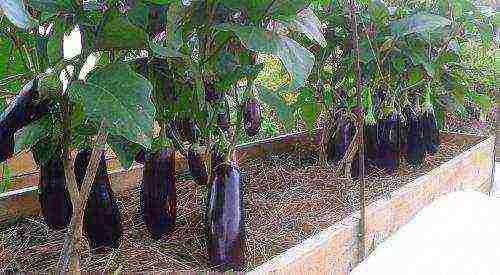
Growing eggplants
Cultivation of culture in the Urals
It is difficult to grow eggplants in the Urals due to the short summer, but it is possible. First of all, you need to study the agricultural technique of planting seedlings. Open field cultivation and climatic conditions:
- seedlings and young plants grow and develop at temperatures above + 20º. If the thermometer falls, pollination and fruit formation becomes impossible;
- at the slightest frost, there is a risk of losing plants;
- lack of moisture provokes the fall of the peduncles and the young ovary, and the existing fruits are deformed;
- "Little blue" love the sun, but daylight hours should be no more than 12 hours.
Eggplant care does not begin with planting seedlings, but with the preparation of the future garden. Choosing a place and preparing the soil should be done in the fall.
Eggplants are very demanding on the quality of the soil. The soil should be moderately light and very fertile. The ridge is chosen in a well-lit place, but so that direct rays fall on the eggplants for no more than 12 hours. Can be planted near trees, from which a small shadow falls at a certain period of the day. In addition, draft protection must be taken into account. The ridge must be free of weeds.
The soil is preferable light, loam or sandy loam. Otherwise:
- garden humus or peat is introduced into heavy soil in spring, rotted sawdust, ground straw, river sand in autumn;
- if there is more sand in the garden, oily chernozem, clay soil, peat, broken sawdust are introduced into it in the fall;
- turf and humus are added to the peat.
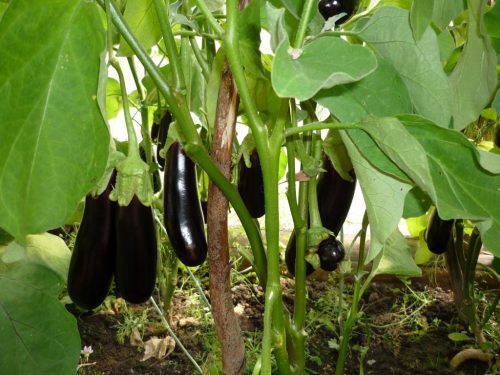
The soil for eggplant should be moderately light and very fertile.
It is possible to grow a good harvest of eggplants only on rich, fertile soil. To do this, in the fall, fresh cow dung is applied to the site. If fertilized in the spring, then with rotted manure, garden humus, in a smaller volume with peat. Fresh mullein in the spring in the garden - the plants will give a lot of greenery, but there will be no ovary and fruit.
The best early varieties of eggplant for growing in the Urals
In the Urals, the following varieties of early-maturing eggplants show themselves well:
- Delicacy Gribovsky;
- Simferopol;
- Rotunda;
- Station wagon 6;
- Diamond;
- Czech early;
- Delicacy 163;
- Quartet;
- Early dwarf 921.
Boarding date calculations
It is difficult to grow such a thermophilic plant in an open garden in the Urals. You need to choose early and mid-season eggplant varieties. Others do not have time to mature. Secondly, it is important to correctly calculate the sowing time for seedlings and, accordingly, planting on the garden bed.
In central Russia, the threat of cold snaps exists until the beginning of June.On average, mature seedlings are planted in the ground on June 7-10. You need to sow seeds 65-70 days before., that is, March 30 - April 7. However, one should not forget about favorable and unfavorable days. It is important to check the lunar calendar. If during this period there are no favorable days for planting seedlings, choose a neutral one. This is if you plan to grow eggplants in the open field. If you are planning to plant eggplants in a greenhouse, the dates need to be shifted twenty days earlier, to the first days of March.
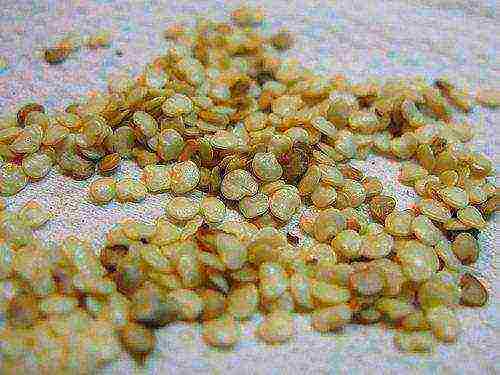
You need to sow seeds on March 30 - April 7
Eggplant seedlings: sowing and caring for the plant
To begin with, let's pay attention to the frequent mistakes of novice gardeners when sowing seedlings.
- Very often, due to long-term storage, seeds lose their germination. To discard dummies, the seeds must be germinated in advance. For seedlings we take only those with sprouts.
- For germination, it is recommended to use growth stimulants. You can make an infusion of stove ash in boiled water or aloe juice (strained).
- Do not use gauze as a substrate for seeds. Eggplant sprouts are very fragile and may break when removed.
- Sprouted seeds are buried in the heated soil by 0.5-0.7 cm. In cold soil, seeds germinate for up to a month or rot.
- Do not put seedlings on a cold windowsill and water them with cold water.
- Seedlings will be healthy if the seeds are properly prepared. To begin with, they are disinfected in a pink manganese solution for 15 minutes. Then it is washed in water at room temperature and immersed in a nutrient solution with an EM preparation (Baikal, Radiance) for 2-3 hours. At the bottom of plastic food containers or ordinary plates, lay a napkin soaked in a growth stimulator, pour the seeds onto it in one layer, cover it with the same napkin. We close the container with a new plastic bag and put it in a very warm place. Hanging cabinets in the kitchen will do. For seed germination, you need to maintain a constant temperature above 20-22 degrees. If the temperature in the room drops to +13 degrees, everything will rot.
- While maintaining humidity and temperature, the first shoots appear within 5-7 days.
When the seeds are nailed, they are carefully planted in a container with earth. Do not forget that the soil must be nutritious, light enough and warmed up at room temperature for 25 days. If you prepare the ground mixture yourself. Mix 5 parts of fertile turf soil, 3 parts of garden humus and 1 part of sand. You can fertilize the mixture with phosphate, potash and nitrogen fertilizers.

Eggplant seedlings do not tolerate picking
Eggplant seedlings do not tolerate picking well, therefore it is recommended to sow seeds in separate containers. These can be peat cups, or ordinary plastic 0.5 l cups. In each container at the bottom, two holes must be made for the release of excess moisture. You need to plant two seeds in each container to a depth of 0.5-0.7 cm. All cups are covered with glass or film. Daily care includes strict control of soil moisture and airing the seedlings (it is enough to turn the shelter two to three times a day and wipe off the condensation).
Seedling care
After the emergence of seedlings, it is advisable to transfer the seedlings to a lighted place with an air temperature of 18-20 degrees, which will stimulate growth, and will positively affect the strengthening of the root system, and not the aboveground one. If both seeds sprout in one glass, the weaker one must be carefully pulled out. You can remove the film or glass from the containers after the appearance of full-fledged cotyledon leaves. If you do this earlier, seedlings may not throw off the seed coat.
If this happens, and it is a pity to pull out the sprouts with "caps", use the advice of an experienced gardener. Throughout the day, every hour, moisten the seed shell on the sprout with warm water with a brush.After 3-4 repetitions, when the film has softened enough, gently pry it off with a needle and remove it.
Watering should be regular, but infrequent. It is enough to irrigate with warm water every three to four days. An excess of moisture will lead to disease and death of seedlings.
The optimal daylight hours for eggplant are 12 hours. Therefore, three weeks after planting seedlings, you need to start at dawn. Such care will speed up the budding phase by 20 days. This means you get an earlier harvest.
Top dressing of seedlings
Seedling care includes regular feeding. The first time it is carried out when the first pair of true leaves appears. Then, once every three weeks, it is watered with soluble complex fertilizers. Adherents of eco drugs can use EO Baikal or EO Shine. From the spider mite, the seedlings are sprayed with a decoction of onion peels.

Seedling care includes regular feeding
In order for the adult seedlings not to stretch, but to be strong and by the time of planting in open ground with a pair of flowers, in May it is recommended to cover it with dense dark material with the onset of evening. Thus, it turns out to reduce the daylight hours for plants to 12 hours. This method makes it possible to harvest in early July.
Landing in the garden
The seedlings are ready for planting in the garden from the moment they reach 10 cm in height and grow 6-7 true leaves. Two weeks before transplanting, plants need to be gradually hardened so that they adapt to growing conditions outside. First, they are taken out into the shade and partial shade. Only after adaptation and obtaining the necessary hardening can the seedlings be taken out in the sun. If the plants start to wither, they are urgently transferred to the shade and watered with warm water. This behavior is typical of young immature plants. From the moment they bloom, they will become more hardy, but they still need constant care.
The day before transplanting, properly water the plants abundantly in order to form a dense single ball, and not to tear the roots when removed from the containers. If you sowed seedlings in peat cups, you do not need to remove the plants.
Since the summer in the Urals is shorter and often colder, it is recommended to organize high beds on the site. Due to the many layers of organic matter, which is gradually rotting, the temperature in the ground on such a ridge is 5-7 degrees higher than in an ordinary garden. Thus, plants develop better and faster. It is better to shape it in such a way that the width of the box is 100 cm, the height is 30 cm, and the length is at the discretion of the gardener. This way you will have free access to all plants. Before planting, the ground is scalded with boiling water.
Eggplants are planted in rows or staggered. Low-growing ones are placed at a distance of 40 cm, high ones - 50-60 cm. Holes are dug on the ridge, spilling abundantly with water. Seedlings are planted in liquid mud. The land around the plants is compacted. Care includes timely mulching, which helps to maintain the microclimate above the soil (temperature, humidity), and to protect against weeds. Someone advises mulching immediately after transplanting, some insist on this procedure only after the first weeding and rain.

Grocery care includes timely mulching
Outdoor eggplant care
Transplanted eggplants need careful care and protection. Since these plants are afraid of the cold, during the adaptation period, the ridge is covered with a film over a mini-greenhouse or wire arches. For the day, the garden bed is opened in the sun. You can completely remove the protection by mid-July.
The first 12-14 days in the garden, the growth of seedlings stops, they get sick after transplanting, during this period the plants require especially complete care. Here it is important to monitor the soil moisture and the condition of the sprouts. Rarely does the entire landing survive. Care is needed as follows: regular loosening to enrich the soil with oxygen.With watering, it is advised not to be zealous, it is better to spray the eggplants with water with the addition of growth stimulants.
A complete plant care procedure includes:
- regular loosening of the soil, the appearance of a crust must not be allowed;
- the soil should not dry out, it is optimally moist, and the water for irrigation should be warmed up in the sun before use;
- during the season, you need to carry out three top dressing with organic matter or mineral fertilizers - 10 days after transplanting, after another three weeks, and during the appearance of fruits;
- do not lower the appearance of weeds in the garden;
- hardened eggplants need to be hilled in order to affect the appearance of adventitious root shoots and an increase in yield.
This is how you can grow and harvest a decent eggplant crop in the Urals, which is in no way inferior to the harvest in the southern regions.
Subscribe Be aware of new products on our site
No vegetable has been "discriminated" by name, except for eggplant. A tomato is a tomato, a pepper was and remains a pepper. And eggplants have long been called "blue", although they, in fact, are not blue. Slowly and persistently, this vegetable went to recognition and now not only restored its own name, but also acquired a residence permit from the Northern to the Far Eastern regions.
Is it possible to grow eggplants in the Urals
The local climate has long been the decisive factor in the cultivation of certain vegetable plants. Due to the location of the Ural ridge along the meridian, air currents from the Atlantic cannot pass further to the east. Precipitation is unevenly distributed on the western and eastern slopes. More rain falls in the western part of the mountains, and in winter the climate is milder due to the abundance of snow.
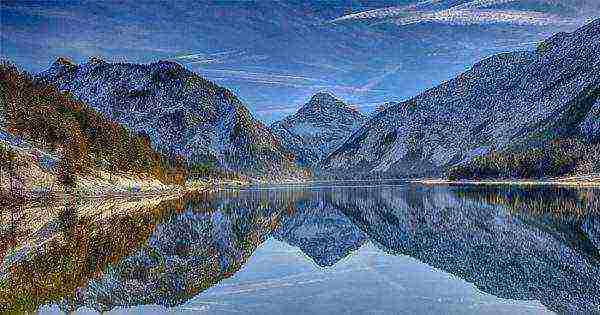
The Ural Mountains shape the landscape and influence the climate of the region
Modern materials used for the manufacture of greenhouses have greatly facilitated the situation of gardeners. In addition, speaking of growing eggplants in the Urals, they do not mean the Subpolar or Northern Urals with its permafrost, but the Kurgan, Orenburg, Chelyabinsk regions and the Republic of Bashkortostan. The climate here, albeit continental, harsh, but quite suitable for farming.
How to grow eggplants in the Urals
Eggplant is a southern and thermophilic culture. The optimum air temperature at which the plant develops is 25–30 ° C. With a cold snap, the growth of eggplants may slow down, and at temperatures below 13-15 ° C, it may stop altogether.
To get a plentiful and high-quality crop, it is worth mastering the principles of crop rotation. Legumes: peas, beans, beans are the best precursors for eggplant. It also grows well after carrots, pumpkin and green crops. And planting potatoes and other nightshades with eggplant is better not to alternate. And it would be nice not to plant even in the neighborhood - pests and diseases are common in the family.
Eggplant belongs to crops with a long growing season. Taking into account the unstable weather in the Ural region in spring, it is worth thinking about choosing a variety in advance. Early and short-fruited varieties ripen better in the Ural summer. Accelerate harvesting and own seedlings. It is always fresh and takes root more easily.
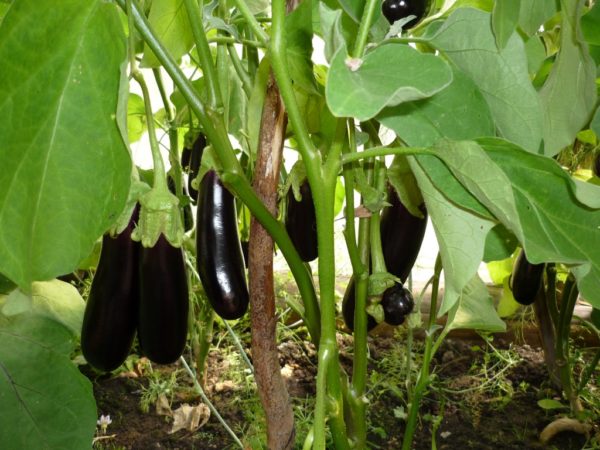
Eggplants are successfully grown in the Urals
Getting seedlings
Eggplant seeds for seedlings are sown at the end of winter. Previously, it is recommended to soak them for at least a day in a solution of some growth stimulant. The easiest way is to wrap the seeds in a rag moistened with a solution of Fitosporin, Epin or Energen and cover them with plastic wrap, so the rag will stay damp longer. Ideally, wait for the seeds to hatch. Sometimes it takes up to three days, and then they are seated in glasses or in a cassette. Eggplant does not tolerate picking well, so it is preferable to initially plant seeds separately.

It is preferable to sow eggplant seeds in separate containers, since the seedlings do not tolerate picking well.
You can prepare the soil yourself by mixing humus, sand and peat in equal proportions. Universal seedling soil is also suitable. The main thing is not to overmoisten it and not to deepen the seeds. It is better to sprinkle a little soil, spread the seeds and then sprinkle them on top so that the soil covers them by 1 cm.After that, you can spray the planting with water, cover with plastic wrap and remove in a warm place until the sprouts hatch. Until that time, plants do not need a light source. You just need to make sure that the soil does not dry out. As soon as the first seedlings appear, the cassettes are transferred to a lighted place so that the seedlings do not stretch out and are frail.
If there is not enough natural light, experienced gardeners are advised to highlight the seedlings with special lamps.
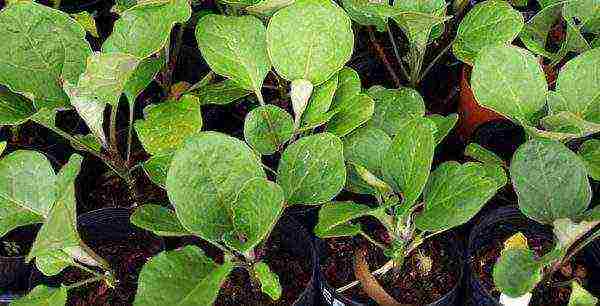
Eggplant seedlings are grown in separate containers so as not to injure when diving
Seedlings are ready for planting in the ground if the sprouts have reached a height of 20–25 cm and have at least 5–6 true leaves. They are planted only to the level of the cotyledon leaves.
Video: preparing and sowing eggplant seeds
Features of planting and feeding
The optimal distance between plants in the greenhouse is 35 cm.In the open field, 30 cm is sufficient.A gap of 60 cm is kept between the rows.When growing eggplant in greenhouses, you need to periodically ventilate the premises, water it in time, weed the weeds and feed the plants. The eggplant soil should be light and fertilized. To improve the mechanical properties of the soil, some gardeners add sand. You do not need to add bags of fertilizers to the entire garden bed, but, following the recommendations of agronomists, fertilize each plant by adding top dressing to the planting hole.

Before planting the eggplant, the planting hole is watered with the addition of fertilizers
For normal growth and development of the bush, eggplant needs nitrogen, for flowering and the formation of an ovary - phosphorus. It is believed that potassium strengthens the immunity of plants, contributes to the formation and development of fruits.
Organic or mineral fertilizers are used depending on preferences. From organic, you can use rotted manure or compost.
Fresh manure, mullein or bird droppings are not used for various reasons. They contain organic acids that can cause root burns. They also contain too much nitrogen, which can lead to fattening of plants, excessive growth of green mass without the formation of an ovary. In addition, weed seeds preserved in the fresh manure will spread throughout the site.
During the overheating of manure, chemical reactions take place, proceeding with the release of energy. The temperature inside the manure heap rises significantly, causing the weed seeds to lose their germination. With overheating, the threat of contamination of the site with helminth eggs due to their inactivation also decreases. It is precisely because of the possible spread of parasites that fresh cattle manure is prohibited from being used as fertilizer in Europe.
You can use a slurry infusion diluted 1:10, or an infusion of poultry droppings after a 1:20 dilution. Previously, manure or droppings are poured with water 1: 2, left for two to three days to ferment. During this time, stir several times a day, then decant and, after dilution, water the plantings. Top dressing is especially important during plant growth and fruit formation.
Fans of organic farming recommend feeding the eggplants on the site with herbal infusion. The most common remedies based on nettle, but you can collect other weeds, add water, leave in a barrel until fermentation, strain and water the bushes with warm infusion. Collect herbs for this purpose before seed formation. It is recommended to dilute all top dressing only with warm water and then bring it under the bush.

An infusion of herbs for feeding eggplants is brought under the bush
Of the mineral fertilizers, it is most convenient to use complex fertilizers such as Kemir or Kemira-Lux according to the instructions. To do this, it is recommended to give the first feeding even at the stage of the appearance of the second leaf in the seedlings.
The second feeding by Kemira is carried out 1-2 weeks before planting in the ground.
After planting in the ground for a couple of weeks, eggplants are not fertilized. 15–20 days after planting, give Nitrofoska (60–80 g per 10 l of water).
During flowering and at the beginning of the formation of the ovary, superphosphate is added (70 g per 10 l of water).
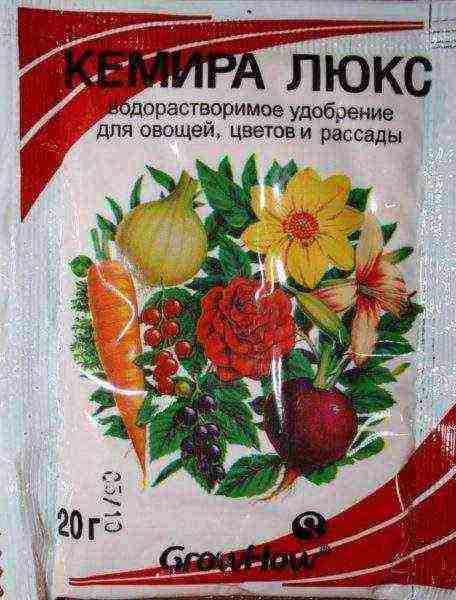
Fertilizer Kemira Lux for feeding eggplants is popular among gardeners
When feeding with mineral fertilizers, a liter of warm aqueous solution is applied under each bush, trying not to get on the leaves. You can apply mineral fertilizers in the form of foliar dressings. To do this, make solutions with a large amount of water (according to the instructions) and spray the bushes abundantly. It is recommended to process mainly the lower part of the leaf blade. There are stomata that absorb the nutrient solution faster.
Those who run the risk of getting confused in the names and timing of the application of top dressing should purchase a modern universal AVA fertilizer, which slowly dissolves and gradually feeds the plants throughout the growing season. According to the instructions, the granules or powder fraction of AVA are introduced into the hole when planting seedlings and are no longer fed, since this fertilizer is not washed out. It contains not only potassium, calcium, magnesium, phosphorus, but also selenium, molybdenum, copper, boron, iron, cobalt. The absence of nitrogen is compensated by the fact that AVA contains substances that trigger the work of nitrogen-fixing bacteria directly in the soil.

AVA fertilizer is used for root and foliar feeding
In order for top dressing to benefit the plantings, you need to water the plants abundantly with warm water after fertilizing. Water the eggplant depending on the conditions. More often in dry weather, less often in rainy. Usually watered once or twice a week, but abundantly.
How to grow eggplants in the Urals in the open field
Although there are varieties of eggplant intended for cultivation in garden plots in the open field, the sharply continental climate of the Urals dictates the peculiarities of caring for eggplant in open field conditions. In the first decade of June, even in the south of the Ural region, frosts are not uncommon, therefore, after planting the seedlings in the ground, they must be covered. And July is often characterized by temperatures above 30–35 ° C. At the beginning of the month, there are thunderstorms with strong gusts of wind, and the second half of July can be very dry.
At this time, it is important:
- Monitor the safety of plastic shelters.
- Protect planting.
- Provide regular watering with warm water.
In August, it may rain, and the last decade of the month is often accompanied by a cold snap. Watering at this time is reduced or stopped, so as not to stimulate the growth of new shoots and to allow the fruits to ripen.
Despite all the difficulties, some gardeners note that when grown outdoors, they manage to harvest a better eggplant crop than in greenhouses.
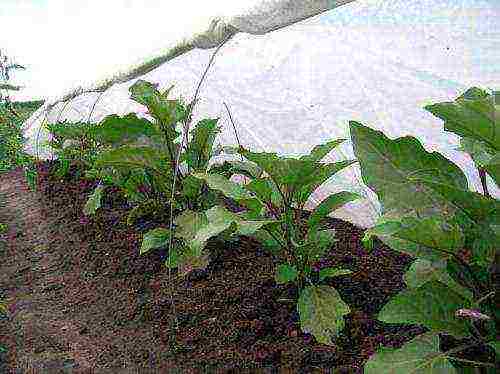
Eggplants under a film cover are protected from temperature changes and wind
Landings can be opened to ventilate, and in bad weather or in strong winds, they can be covered again. The most affordable way is to pull the covering material over the arcs. You can use polyethylene or spunbond. Some gardeners combine these materials.
Video: the secrets of growing eggplant in the open field
After the seedlings have begun and got stronger, you need to start forming bushes:
- In seedlings grown up to 25-30 cm, pinch the top, stimulating branching.
- Stepsons (that is, shoots grown in the leaf axils) below the branching level are removed.
- Several evenly developed ovaries are left on the bush.
- New flowers are removed regularly.
Some varieties of eggplant do not need to be formed, but they also need to pick off excess flowers so that the remaining ovary has time to ripen.
Video: forming an eggplant bush
Eggplant varieties for growing in the Urals
Early maturity and height of the bush are of fundamental importance for choosing a variety in the special climatic conditions of the Ural region. One of the time-tested varieties of eggplant is Almaz. It was created at the end of the seventies at the Donetsk experimental station for growing in the open field. The author of the variety is N.M. Nasrullaev.
Almaz variety - medium ripening period. The plant is about half a meter high. From emergence to maturity, 110–150 days pass. The fruits are located mainly in the lower part of the bush, which is convenient for mechanized harvesting.
Leaves are green, slightly cut. The corolla of the flower is light purple. Fruits are dark purple, glossy, cylindrical, reaching a length of 14-17.5 cm. Average weight 100-165 g. The variety is characterized by a harmonious return of the harvest. The pulp does not have the bitterness usually found in eggplant. The taste of the fruits is excellent, they are used in cooking and for canning. They tolerate transportation well.
Disease resistant. The yield of Almaz eggplant is 2.1–7.5 kg / m2.
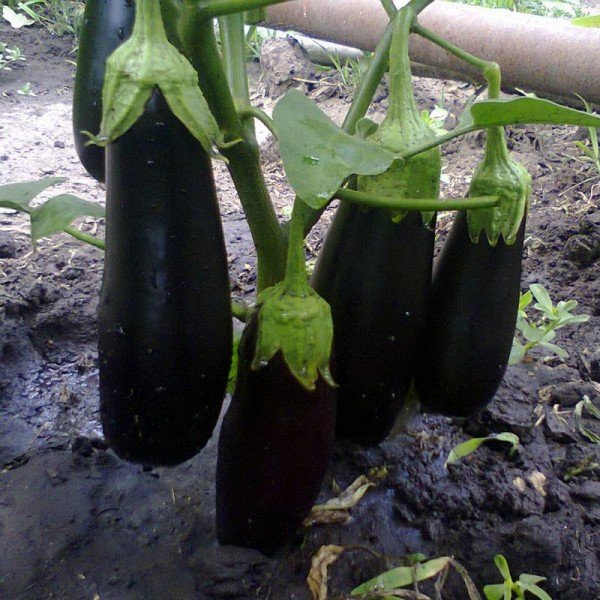
Almaz eggplants grow on the underside of the bush and give a friendly harvest
Siberian breeders also took part in the expansion of the eggplant distribution zone. Vera is an early eggplant variety created at the West Siberian Vegetable Experimental Station. Bred at the end of the twentieth century. The fruits ripen 110-118 days after the first shoots appear. Forms bushes of one meter height. Its average yield is less, only 1.2 kg / m2, but the taste of the fruit is exceptionally pleasant, devoid of bitterness. Pear-shaped, dark purple, glossy. Average weight 125-181 g. It is used in home cooking and canning. Recommended for growing outdoors in the Ural, West Siberian and Far Eastern regions.
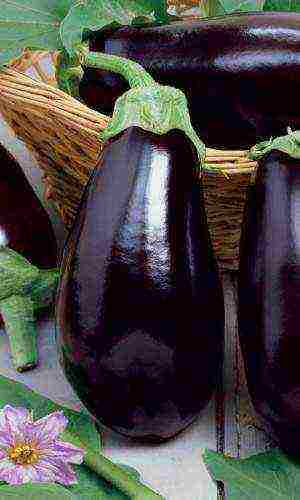
Vera eggplants ripen early
An unpretentious variety that does not require formation, adapted for growing in all regions - Robin Hood early eggplant. Originator: selection and seed-growing company "Manul". Fruits ripen 100-120 days after germination. The height of the bush is no more than 100 cm. The leaves are smooth, green, of medium size. The fruits are pear-shaped, purple, with white flesh. The average weight of fruits is 250 g. They are used in cooking for frying, baking, stuffing and canning.
In terms of yield, it surpasses Almaz and Vera varieties. They collect 8-12 kg of eggplant from 1m2. Recommended to grow under film shelters.
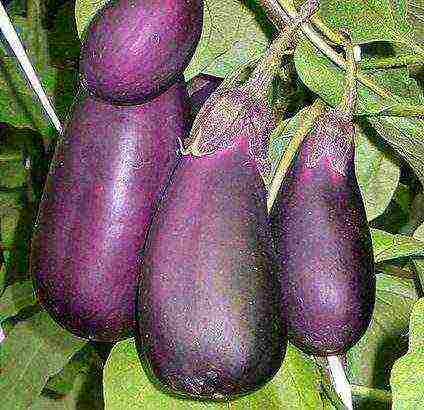
Robin Hood eggplants are easy to stuff and bake
The State Register contains many more varieties of eggplant, the cultivation of which is possible in all regions of Russia:
- White Night,
- Bourgeois,
- Goby,
- The taste of mushrooms,
- Galina,
- Green,
- Emerald,
- Caprice,
- Maria,
- Marquis,
- Gardener's dream
- Dark-haired woman,
- Fat gentleman,
- Black brilliant,
- Black Raven.
These varieties and hybrids are united by an early ripening period, yield and the fact that they are recommended for growing in open ground and under film shelters.
Common early to mid-early ripening varieties include:
- White fairy
- White prince
- Boatswain,
- Winnie the Pooh,
- Indigo,
- Milkman,
- Pelican,
- Ping pong,
- Samar,
- Chernomor,
- Black Prince,
- South night.
These varieties are fruitful and are intended for cultivation in all regions of Russia, both in open and protected ground.
Photo gallery: eggplant with an unusual shape and color
Reviews
The State Register contains a large number of eggplant varieties for garden plots, but breeders also offer fruitful hybrids for commercial production. This means that the need for high-quality vegetables dictates new conditions to farmers, and the "blue" ones are no longer a southern curiosity, but a full-fledged food product.The latest high-yield varieties and the use of modern greenhouses make the process of growing eggplant not only a simple hobby, but also a good source of income.
Hello! I am a doctor, candidate of medical sciences. Recently I decided to try myself as a copywriter. Always loved to write. And there are so many different topics on this site! I hope that by cooperating with this site, I can share my thoughts and knowledge with others.
Many believe that growing eggplants in the Urals in the open field is an unrealistic task.
This is not the case, there are varieties and hybrids of eggplant that allow you to do this.
Read more about the features, timing of planting seedlings and other subtleties in our article.
…
When to plant eggplants for seedlings in the Urals?
REFERENCE! The Urals belongs to the area of agriculture with an increased risk, this is due to the fact that the summer in this region is short. In this regard, the choice of eggplant for growing in this region should be made in favor of early varieties or hybrids, this first rule will allow them to fully ripen and get a good harvest.
Second rule: it is necessary to choose varieties that are resistant to temperature extremes and tolerate low temperatures well.
There is a large selection of such seeds on the market now. The most famous among them are "Delicacy Gribovsky-752", "Dwarf early-951", "Dnestrovets", "Rotunda"... For a short summer in the Urals, these varieties have time to fully ripen, in addition, they have a good yield and a number of other advantages. Learn more about preparing seeds before sowing.
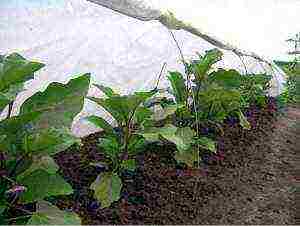 It is better to grow under a film, this will give an additional guarantee that heat-loving vegetables will have time to ripen before the end of summer.
It is better to grow under a film, this will give an additional guarantee that heat-loving vegetables will have time to ripen before the end of summer.
It is possible to do this in unprotected ground, but it is risky and troublesome. Therefore, in order to make life easier for yourself, you need to cover it with a film.
When growing seedlings of gardeners, many difficulties await; this is perhaps the most crucial stage in growing this type of nightshade. Falling seedlings, stretching and yellowing of foliage - this is not a complete list of the difficulties that gardeners have to face when growing it.
IMPORTANT! To avoid problems at the very beginning,
the lighting regime should be strictly observed , seedlings are very fond of light, temperature and
watering mode
.
You should also watch out for harmful insects that can cause irreparable damage to small shoots. Also, a very important point will be the choice of containers for growing seedlings, they should be spacious and treated with an antiseptic.
How to grow eggplants in the Urals in a greenhouse? These vegetables in the Urals are grown only in heated greenhouses, since no other option is possible. It takes about three months from the moment the seeds were planted in the ground to their germination.
Planting dates for eggplant seedlings in the Urals. To be guaranteed to avoid return frosts, which is not uncommon for the Ural regions, it is better to wait until the middle of the month. It turns out seeds for seedlings should be planted in late February - early March.
Strongly it is not worth delaying the deadline, since the plant has a long vegetative period and eggplants may not have time to ripen, even early maturing and frost-resistant ones.
Open ground transplant
 The optimal time for planting eggplant seedlings in open ground is early-mid Junewhen you can not be afraid of frost at night.
The optimal time for planting eggplant seedlings in open ground is early-mid Junewhen you can not be afraid of frost at night.
For planting in open ground, varieties of early ripening, resistant to temperature extremes, are recommended.
How to plant eggplants for seedlings in the Urals? The harsh climatic conditions can be mitigated by the composition of the soil where the eggplants will grow. It should be rich in minerals and trace elements and be neutral in composition.
Eggplants like all nightshades do not like acidic soils... To lower the acidity, you can use chalk or dolomite flour, both products are equally good and effective and, most importantly, safe, as they are completely natural.
In terms of mechanical properties, loose and loamy soils are more suitable than others. Therefore, it is better to prepare it before planting. To do this, you need to take sand at the rate of one bucket per square meter. m. of land. You can add peat and ripe sawdust.
Then dig up everything and loosen it properly. For growing in unprotected soil choose a well-lit place, preferably without shade and drafts. To create optimal conditions, the following planting scheme is used: between seedlings 45-50 cm and 50-65 cm between rows.
This method of planting does not give excessive thickening and all the bushes will have enough light, this is especially important in summer conditions in the Urals. After planting in open ground, young shoots should first be protected at night with a covering material. After the bushes have finally hardened, the protection can be removed.
How to grow eggplants outdoors in the Urals?
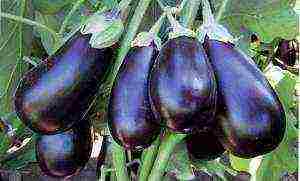 It takes a lot of work to get a good eggplant harvest in the difficult climatic conditions of the Ural region.
It takes a lot of work to get a good eggplant harvest in the difficult climatic conditions of the Ural region.
In addition to the harsh weather conditions, another danger lies in wait for gardeners: these are pests.
Eggplant can be attacked by spider mites, Colorado potato beetles and other pests that eat nightshade crops. Aphids, mites and thrips can be fought by washing them off with soapy water, but Barrier will be more effective.
From the Colorado potato beetle, the Prestige remedy is effectively taken. Since eggplant seedlings are still grown in greenhouses, they are, among other things, threatened by the greenhouse whitefly and the drug Confidor has been successfully used against it for many years.
Most modern varieties and hybrids of eggplant, especially for regions with low temperatures, have good resistance to diseases, including fungal ones. But this does not mean that the owners of summer cottages can relax, no one canceled prevention.
Timely watering, abundant but infrequent, good lighting and low planting density is the first step to healthy plants and a good harvest. But there are all kinds of things on the site. If your plantings are affected by root rot, you need to reduce watering.
Blackleg Is an incurable disease that threatens to spread to other plants. To avoid this, the affected bushes are removed, and the places where they grew are treated with a disinfecting solution. Unfortunately, only such drastic measures can prevent the spread of the disease to the rest of the bushes.
It should be watered with lukewarm water every 10-12 days, but abundantly. Water should be passed through a filter or defended during the day. Top dressing should be carried out 3-4 times per season.... It is better to use complex fertilizers.
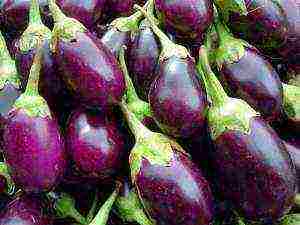 For this, such means as "Zdraven" "Kemira-hydro" "Kemira-Kombi" are suitable.
For this, such means as "Zdraven" "Kemira-hydro" "Kemira-Kombi" are suitable.
In addition, to provide the eggplant bushes with microelements, every 25-30 days, fertilizing with such preparations as "Zircon +" and "Cytovit" should be carried out. This will fully meet the plant's needs for all the necessary substances.
Eggplant bushes require a mandatory garter, and its branches should be strengthened with props, since the fruits are quite large, which can cause them to break off. When the plant reaches 30-45 cm in growth, it can be pinched, leaving no more than 6 ovaries.
Fortunately, there are varieties that can be grown outdoors in the Urals. This is not the easiest thing, but if you try hard, everything will work out, of course. Good luck and a big harvest.
Useful materials
Read other articles on growing and caring for eggplant seedlings:
- Different growing methods: in peat tablets, in a snail and even on toilet paper.
- All the features of sowing according to the lunar calendar.
- The golden rules for growing from seeds.
- Features of cultivation in various regions of Russia: in Siberia and in the Moscow region.
- Is it obligatory to do a dive?
Useful video
Tips for growing eggplant seedlings in the Urals from the practice:
It would seem, why not start growing eggplant seedlings in your summer cottage? This is a very nutritious vegetable that can be used to diversify any homemade dish, besides, it can be enjoyed in canned form even in winter, when fresh vegetables are tough. However, not all experienced farmers take up this business. And all because eggplants in the Urals or in another northern region are not always cultivated successfully, since it is primarily a thermophilic culture. But all the secrets of growing are in proper care.
Variety selection and soil preparation
What is the difficulty in the process of choosing a variety and growing eggplants in the Urals is in the climatic features of the region. Summer here is very short, besides, the weather is always changeable, and this is fraught with sudden cold snaps at the height of the summer season. Therefore, growing eggplants for the Urals in a home greenhouse is a much more profitable solution. If we make a list of the most favorable varieties of eggplant that can still be cultivated in the northern part of Russia, we will refer to these:
- "Early dwarf-921";
- Dnestrovets;
- "Delicacy Gribovsky-752";
- "Donetsk yielding";
- "Rotunda".
What should you look for when choosing and purchasing eggplant seeds? First of all, the farmer evaluates the characteristics of the yield, because we all want the money spent and the efforts made to be worth it. Next, you should pay attention to the taste characteristics of the vegetable: each of the varieties has its own zest, the taste of some specimens may contain bitterness, and there are varieties devoid of bitterness.
You should not buy seeds from unverified people, in spontaneous markets, etc. It is better to contact a specialized store where workers are responsible for the quality of the seed. Remember to check the expiration date on the grain packaging. The choice of the substrate must also be taken seriously.
Some gardeners prefer to save on this, so they mix all the necessary components on their own. But a much more optimal solution is to purchase potting mix in the store. It is distinguished by high fertility, moderate acidity, as well as water and air permeability. Given the fact that you have to work with seedlings in a region that is not very favorable for this, it is better not to skimp on the potting mix.
Video "Sowing seeds for seedlings"
From the video you will learn how to properly sow seeds for seedlings.
Growing seedlings
Growing eggplants in the Urals is quite possible, but you will have to work hard to get the best result. As a rule, sowing seeds for seedlings can be carried out already in late February - early March. However, the seed must be prepared for this process. Some farmers prefer to wrap the seeds in a damp cloth for a few days to make them germinate. But this is optional. As for the mandatory measures, these include soaking the grains in a solution of potassium permanganate. This is done in order to protect future seedlings from various diseases.
Very often, gardeners prefer to sow eggplant seeds in one large container or box. But keep in mind: then the seedlings will need to be "transferred" to the open ground. The root system of the sprouts of this crop is very flimsy, so it won't cost you anything to damage it. In order not to lose several seedlings in the process of their further transplanting, it is necessary to immediately distribute the sprouts in separate small containers.These can be miniature flower pots, cups, plastic bottle scraps, as well as special cassettes with individual cells.
Seedling care
When the best varieties of eggplant, selected by you for breeding in your summer cottage, are planted, and the seedlings are actively developing, you need to be able to provide full care for it. This is not an easy task, but a competently carried out process will largely determine your further result. What recommendations should be followed by both beginners and experienced gardeners:
- do not put seedling containers in a cool place, for example, on a windowsill. In addition, sometimes farmers forget that plants can be watered with extremely warm and pre-set water;
- in the first days after the appearance of the first shoots, it is worth creating an optimal microclimate for seedlings. This is a relatively high temperature (18-20 degrees) and moderate humidity. Do not forget to ventilate the room in which the eggplant seedlings grow.
As for watering, it should not be done too often, otherwise excess moisture can lead to the death of the plant. It will be enough to irrigate the soil every three days. Another significant nuance is lighting. Eggplant seedlings require 12 hours of full light daily. If you cannot naturally provide such a moment, use table lamps or lamps to illuminate.
Planting seedlings to a permanent place
Eggplant cultivation in the Urals should be very careful. For the most part, gardeners choose greenhouses. If there is no opportunity to plant seedlings in a special room, you can independently build a small greenhouse in the garden or garden plot. To do this, you need to drive the pegs into the ground, and then tighten everything with a strong film. Try to fill the holes with compost in the process of planting the shoots, when it begins to be processed, the temperature of the soil will rise, which will have a beneficial effect on the condition of the plants.
How to plant eggplant sprouts correctly? First of all, it is necessary to adhere to a certain distance between the pits - 40 cm and between the rows - 50 cm. Try to deepen the seedlings to the first leaves. After planting the eggplant in the ground, it is necessary to fill everything with water. How to care for seedlings in the future? The main thing is to follow the basic recommendations of specialists: regularly loosen the top layer of the soil, as well as water the plants and protect them from hypothermia. Sometimes even in late spring there may be frosts at night, so it is recommended to cover the seedlings with transparent film at night.
Care, feeding, watering
How to grow eggplants correctly and ultimately reap a really bountiful harvest? The main thing is to clearly follow the plan. You should not wait for special results immediately after disembarking the seedlings to a permanent place.
In the first two weeks, the shoots practically do not develop. They have experienced severe stress, so give them time to fully adapt to their new growing conditions. In addition, the microclimate in the garden is significantly different from the greenhouse one.
For those who wish to ensure the intensive growth of eggplant seedlings in the Urals, the following recommendations should be taken into account:
- it is necessary to regularly loosen the soil;
- it is impossible for the top layer of the soil to dry out, it needs to be moistened often;
- pay attention to plant nutrition. It is advisable to divide this process into three stages - 10 days after planting the shoots in open ground, after three weeks, and also during the period when fruits begin to form on the greenery. What fertilizers are most suitable for this crop? It can be organic or mineral fertilizers. You can breed them yourself, or you can buy ready-made mixtures in the store;
- regularly remove weeds from the soil, which not only clog the soil, but also contribute to the spread of insects and other pests.
It is no longer necessary to plant seedlings only in the southern region. You can also get a good harvest in the northern regions of the country, for example, in the Urals. The main thing is to take this process seriously and provide all the necessary conditions for the growth of eggplants in your garden.
Harvesting
Many farmers want to prepare seeds on their own after receiving the eggplant harvest so that they can be added to seedlings next season. This can be done. Choose a few of the largest fruits in the garden and leave them in a warm room for 5-10 days, for example, put them on a window. As a result, you will receive a new seed.
Eggplants themselves cannot always be stored in cellars for a long time. It is better to preserve them or use them in cooking. The main thing is to know when to plant seeds to get seedlings, and how to carry out all stages of plant care correctly and without special financial costs.
Video "Features of growing eggplant"
From the video you will learn how to properly grow eggplants.
